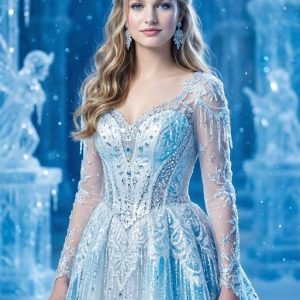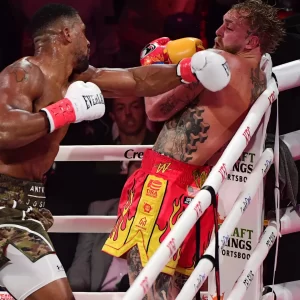Did Prince Harry Once Have Feelings for Princess Catherine? Rumors Resurface
Royal gossip has a way of resurfacing at the most unexpected times, and this week, it is whispers about Prince Harry and Princess Catherine that have set the internet ablaze. The claim? That Harry once harbored a quiet admiration—or even a “crush”—on his sister-in-law, the woman the world knows today as Kate Middleton.
Though never confirmed, the story has reemerged in light of renewed public fascination with the dynamics between the Sussexes and the Cambridges. At its core, the rumor paints a picture of Harry, the younger prince often seen as playful and spontaneous, captivated by Catherine’s elegance and poise during her early days in the royal spotlight.
A Rumor Rooted in the Past
The speculation dates back to the mid-2000s, when Catherine began appearing regularly in public as Prince William’s girlfriend. Observers noted how easily she blended into the royal fold, impressing courtiers with her grace and gaining public affection for her natural warmth.
According to some commentators, Harry was among those who quickly recognized her charm. “Harry admired her from the start,” one royal insider suggested. “She had a calm confidence, and she treated him like a younger brother. It was refreshing.”
The “crush” narrative seems to have grown more from public imagination than from any documented behavior. Yet, in a royal family where relationships are scrutinized endlessly, even the suggestion was enough to generate intrigue.
A Bond of Affection—But Platonic
Those close to the royals stress that Harry’s admiration for Catherine was never romantic in nature, but rather a reflection of his appreciation for her role in William’s life.
“Harry adored Kate, but as a sister figure,” one family friend explained. “She brought stability into the family, she grounded William, and Harry respected that immensely.”
Indeed, Harry himself once described Catherine as “the big sister I never had,” a comment that endeared him to the public but also fueled whispers about deeper feelings. The truth, according to insiders, is that their relationship was one of mutual respect, shared laughter, and camaraderie.
The Royal “Love Triangle” That Never Was
Still, tabloids could not resist framing the trio as a “royal love triangle.” Headlines speculated about Harry’s place in the young couple’s dynamic, hinting that he was the third wheel in William and Kate’s budding romance.
While the notion of rivalry made for catchy copy, the reality appeared far more ordinary. Harry often joined William and Catherine for casual outings and vacations, cementing a bond that felt familial rather than flirtatious. Photographs from those years frequently showed the three laughing together, suggesting comfort and ease rather than tension.
Meghan Markle’s Arrival and Changing Dynamics
The rumor of Harry’s alleged early affection for Kate has resurfaced in part because of the changes brought by Meghan Markle’s entry into the royal family. With Meghan’s marriage to Harry and the subsequent split from royal duties, comparisons between the Duchess of Sussex and the Princess of Wales have dominated headlines.
Royal commentators suggest that the reemergence of these old whispers reflects a fascination with how the two women symbolize different paths for Harry. One represents the traditional royal mold, the other a breakaway from it.
“Harry’s admiration for Kate was never about romance—it was about the qualities she brought to the institution,” said royal historian Dr. Emma Clarke. “In a way, people are projecting their own narratives onto him, contrasting what could have been with what is.”
A Public Fascination With “What Ifs”
Why do such rumors endure, despite the lack of evidence? Experts point to the allure of the “what if” scenario.
“The public loves to imagine alternate histories,” Clarke explained. “What if Harry had pursued someone like Kate? What if the brothers had built families side by side without conflict? These hypotheticals are irresistible because they reflect both longing and disappointment in how the royal story has unfolded.”
In reality, Catherine was always committed to William, and Harry’s path led him to Meghan—a relationship that redefined his life and his role within the monarchy. Yet, the persistence of the rumor suggests that the public still finds something compelling in the imagined version of events.
Media Spin vs. Reality
Critics argue that the constant recycling of such gossip does more harm than good, especially for the individuals involved. “It reduces their relationships to soap opera plotlines,” one media analyst said. “Harry and Kate’s bond was meaningful in its own right—as siblings-in-law who cared for each other. That deserves recognition without sensationalism.”
Nonetheless, the media spin is hard to stop. With every public appearance of William, Kate, and Harry in the past, photographers searched for subtle gestures, side glances, or offhand remarks to fuel stories.
Today, as relations between Harry and the royal family remain strained, those images of camaraderie with Catherine are often recirculated, used as symbols of “better times.”
Where Things Stand Now
Currently, Harry’s relationship with Catherine is described as cordial but distant. The Sussexes’ move to the United States and the well-documented rifts with William have inevitably created space. Insiders suggest that while Harry still respects and admires Catherine, their interactions are limited.
“She will always be important to him,” one source claimed. “But the circumstances of the past few years mean they simply don’t see each other the way they once did.”
For Catherine, her focus remains firmly on her role as Princess of Wales, her duties to the crown, and her family with William. The old rumors of Harry’s supposed crush hold little relevance to her daily life, though they continue to be a point of public curiosity.
Conclusion: The Power of Royal Myth
The resurfacing of whispers about Prince Harry’s feelings for Princess Catherine speaks less about the individuals themselves and more about the enduring fascination with the British monarchy. Stories of unrequited affection, rivalry, and imagined romances reflect the public’s desire to humanize the royals—casting them into roles familiar from literature and drama.
In truth, Harry’s bond with Catherine has always been defined by affection, respect, and familial warmth. Yet the myth of a “royal crush” endures, not because it is real, but because it feeds the imagination of those eager for tales of love, longing, and “what might have been.”
As the royal family continues to evolve, so too will the stories told about them. And whether fact or fiction, those stories remain a reminder of the powerful spell the monarchy casts over the world’s attention.





